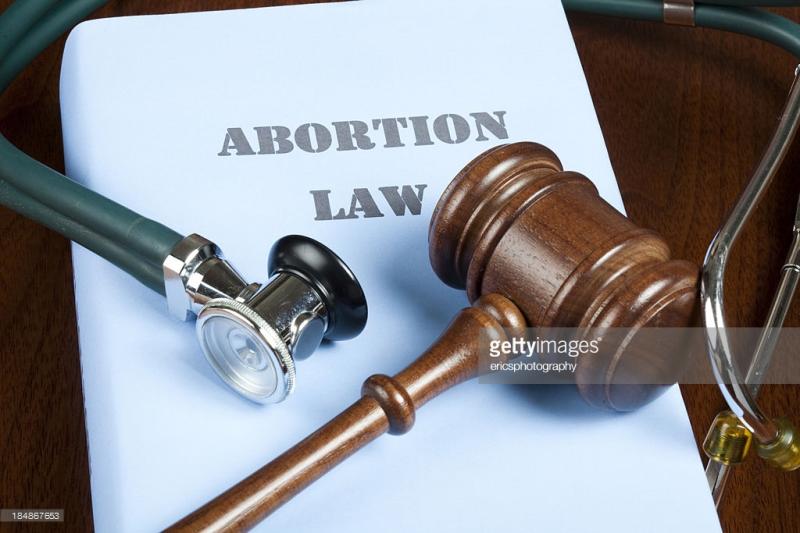Abortion rates go down when countries make it legal: report

From NBCNews (emphasis mine):
Abortion rates have fallen over the past 25 years, even as more countries have made the procedure legal and easier to get, according to a new report released Tuesday. Countries with the most restrictive abortion laws also have the highest rates of abortion , the study by the Guttmacher Institute found. Easier access to birth control drives down abortion rates, the report also finds.
The report finds about 56 million abortions occur every year — nearly 50 million of them in developing countries. About a quarter of all pregnancies end in abortion. Because there are so many women of childbearing age, the number of abortions has gone up, but the rates per 1,000 women have fallen, the report found. Switzerland had the lowest abortion rate at 5 per 1,000 women. The U.S. rate is 13 per 1,000 women, the same as Britain's, the report found. Colombia and Mexico had abortion rates of 34 per 1,000 women. Pakistan’s estimated abortion rate was the highest at 50 per 1,000 women.
"Abortions take place around the world, no matter the legal setting," the report reads. But, it adds, “ Provision of abortion is safest where it has long been legal ."
“Nonetheless, some countries with broadly liberal laws have increasingly added restrictions that chip away at access to legal procedures; these include the United States and several countries in the former Soviet Bloc or zone of influence.”
Emails reveal how Trump appointees retracted teen pregnancy policies over loud objections. The Trump Administration has embraced a conservative-led movement to limit abortion rights in the U.S. Earlier this week, Mississippi’s governor signed a law banning most abortions after 15 weeks gestation, although a federal judge blocked the law Tuesday. And the Trump Health and Human Services Department has reversed Obama era policies that made contraception more freely available and that used evidence-based approaches to fight teen pregnancy — over the objections of career health officials.
A 2012 study of more than 9,000 women found that when women got no-cost birth control, the number of unplanned pregnancies and abortions fell by between 62 and 78 percent. But political appointees at HHS advocate for abstinence-only approaches, which have been shown not to affect unplanned pregnancy rates. The report from Guttmacher , which studies reproductive health issues, found rates of both abortions and of unintended pregnancies have fallen worldwide.
“Improved contraceptive use, and in turn, declines in unintended pregnancy rates are the likely driver behind the worldwide decline in abortion rates,” Susheela Singh, vice president for international research at the Guttmacher Institute, said in a statement. "Most women who have an abortion do so because they did not intend to become pregnant in the first place. Meeting the need for contraception is critical to bringing down rates even further.”
The report found abortion rates vary greatly region by region. Much of the reduction in abortions overall follows changes in the former Soviet Union, with policies encouraging contraception over abortion. The highest abortion rates are now found in Latin America and the Caribbean, where abortion is strongly restricted legally. “ Highly restrictive laws do not eliminate the practice of abortion, but make those that do occur more likely to be unsafe ,” the report reads. The report’s findings echo those from the National Academy of Medicine last week. It found that, despite claims from some anti-abortion-rights officials, abortion care is overwhelmingly safe in the U.S. It found that abortions can be safely provided in clinics and doctor’s offices.
“ In many states, regulations have created barriers to safe, effective, patient-centered, timely, efficient, and equitable abortion services ,” the report reads.
“Abortion is among the most regulated medical procedures in the nation,” it adds.
Trump contraceptive move could lead to more abortions “Having an abortion does not increase a woman’s risk of secondary infertility, pregnancy-related hypertensive disorders, abnormal placentation, preterm birth or breast cancer.” The Guttmacher and National Academies reports agree that making it more difficult to get abortions forces women to get them at a later stage, when they will be more complicated, expensive and risky.
Guttmacher found when that happens to women in developing nations, they often turn to “traditional” methods which include:
- Inserting sticks, roots, bones, wires, ground seeds or chemicals into the uterus
- Instilling bleach, saltwater, detergent or soap into the uterus;
- Drinking alcohol, detergent, bleach, tea or herbs;
- Taking aspirin, painkillers, laxatives, hormones or other medications;
- Beating or pushing on the abdomen or jumping from heights;
- Blowing air into the vagina or placing a hot stone on the abdomen to “melt” the fetus.
“Not only do these methods often fail, they can lead to severe complications,” the report concludes.




Access to birth control reduces the rate of abortion. No surprise there. The best way to avoid unintended pregnancies and prevent the need for abortion is to allow women easy and cheap access to contraception. Abstinence is a joke and totally unrealistic. Denying or restricting a woman's access to contraception or abortion not only infringes on her rights, but it also potentially threatens her health. Research studies clearly show this. Of course, die-hard anti-abortionists (including certain politicians) probably don't care about that or what the research shows.
It's amazing how much easier it is when a politician or priest isn't trying to make it all about sex and power over women.
Indeed. Such misogynistic views is like an obsession to them.